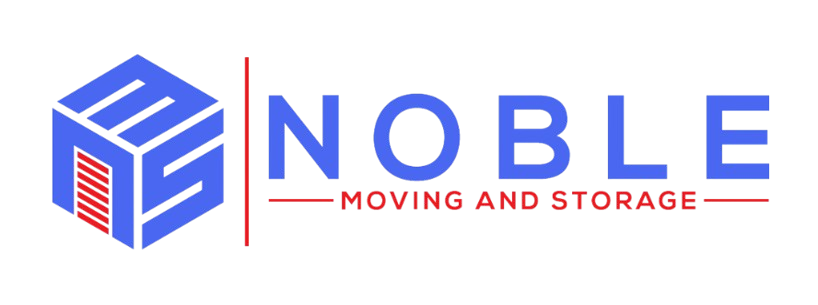
- Home
- -
- The Ultimate Week-by-Week Moving Checklist for 2025
The Ultimate Week-by-Week Moving Checklist for 2025
Moving without a checklist is like going grocery shopping without a list; you’re almost guaranteed to miss something important and end up making extra trips.
Moving is exciting, but it also comes with a long list of responsibilities that can feel never-ending.
Between booking movers, updating your address, and tracking down where you packed the coffee maker, it’s easy for things to slip through the cracks.
In fact, 72% of Americans face challenges during their move, with stress being the number one issue.
That’s exactly why a smart, step-by-step checklist is more than just a helpful tool—it’s your move’s safety net.
No matter if you’re a homeowner planning a big transition, a family balancing busy routines, or a first-time mover trying to stay ahead, the right checklist gives you clarity, confidence, and control.
Let’s get you organized and make your next move the easiest one.
Why You Should Never Move Without a Checklist
A move involves dozens of decisions, deadlines, and details, some of which are easy to overlook when you’re managing everything at once. That’s why having a clear plan isn’t just helpful; it’s essential.
Here’s how the right checklist makes all the difference:
Stay on Schedule from Day One: Timing matters. From eight weeks out to the final days, a checklist helps you stay on track, reduce stress, and avoid last-minute rush.
Avoid Costly Mistakes and Oversights: Small mistakes, such as missing address updates or utility shut-offs, can cause significant headaches. A moving checklist helps you avoid these costly errors.
Ensure Nothing Gets Forgotten: Moving comes with countless little details, documents, valuables, keys, and chargers. The Ultimate Moving Checklist helps you cover it all.
The Week-by-Week Ultimate Moving Checklist
You’ve seen how a checklist can keep you on track, avoid costly mistakes, and make sure nothing gets left behind. Now, let’s put that into action.
This week-by-week moving checklist breaks the entire process into simple, manageable steps so you’re never wondering what to do next or when.
8 Weeks Before the Move
The earlier you start, the more in control you’ll feel. These first few weeks are all about planning, sorting, and setting the tone for a stress-free move.
Declutter and donate: Go room by room and decide what to keep, donate, sell, or toss. Lightening your load now saves time and money later.
Research movers or truck rentals: If you’re hiring pros or renting a truck, compare companies, check reviews, and get quotes. Ensure they’re licensed and insured, which is important for first-time movers.
Start a moving budget: Track potential costs, such as moving supplies, deposits, and transportation fees. Having a clear budget keeps you from overspending.
Create a central document folder: Set up a physical or digital folder to store estimates, receipts, checklists, and important paperwork. This becomes your go-to hub for all move-related info.
6 Weeks Before the Move
With your plan in place, it’s time to get proactive.
Six weeks out, your focus shifts from planning to action. This is when your moving checklist starts turning into real progress.
Buy packing supplies: Stock up boxes, tape, bubble wrap, markers, and labels. Having supplies on hand early makes the packing process smoother—and prevents last-minute store runs.
Begin packing non-essentials: Start with items you won’t need over the next month—seasonal clothes, books, décor, and extra kitchenware. Label boxes by room for easy unpacking.
Notify schools, doctors, HR, and others: Update your child’s school, inform your employer’s HR, and notify your doctor or vet. Request records or referrals if changing providers.
Make childcare or pet care arrangements: Moving day is hectic, and having young children or pets underfoot adds stress. Now’s the time to arrange care so you can focus fully on the move.
4 Weeks Before the Move
Now, you’re officially at the halfway point.
With one month left, finalize moving day details and essentials—key for renters and homeowners to set up the new place and wrap up the old.
Confirm movers or truck rental: If you haven’t already, finalize your booking and obtain everything in writing, including dates, pricing, and services. Review cancellation policies, just in case.
Change your address: File a change of address with USPS and update banks, insurance, subscriptions, and services to avoid mail issues later.
Set up utilities at the new home: Schedule electricity, water, gas, internet, and trash service early to avoid surprises on move-in day—whether renter or homeowner.
2 Weeks Before the Move
With a moving day on the horizon, now’s the time to tie up loose ends and finish major packing.
The goal is to reduce any last-minute scrambling so your final week can focus on simple, manageable tasks.
Finish most packing: Aim to pack 80–90% of your belongings, keeping essentials like clothes, kitchen items, and toiletries for last. Start early and pace yourself, especially if you’re a family or first-time mover.
Confirm moving day logistics: Double-check times with your movers or rental company, reconfirm elevator or parking reservations, and make sure everyone helping knows where to be and when.
Prepare a box of essentials and secure valuables: Pack a clearly labeled box with essentials like toiletries, chargers, clothes, and important documents. Keep cash, ID, and valuables with you, not in the moving truck.
1 Week Before the Move
You’re in the home stretch. With just one week to go, it’s all about final touches—preparing your current space for handover and making sure your move-in goes off without a hitch.
Deep clean your home: Whether renting to get your deposit back or selling your home, a thorough cleaning is essential. Don’t forget baseboards, appliances, and inside cabinets.
Disassemble furniture: Take apart beds, desks, and larger furniture in advance to save time and avoid stress on moving days. Keep the hardware in labeled bags taped to the item.
Clearly label boxes: If you haven’t already, make sure every box is marked with its contents and destination room. This is a game-changer when unpacking.
Final prep: tools, paperwork, pets: Gather tools for disassembly, keep moving documents handy, and prepare pet carriers or travel kits. These small details ease the moving day.
Moving Day Checklist
The big day is here—and thanks to your preparation, you’re ready to take it on with confidence.
Still, the moving day moves fast, so having a final checklist ensures nothing gets left behind or overlooked in a rush.
Final walkthrough of your old home: Before you leave, walk through each room. Check closets, cabinets, drawers, and storage spaces to make sure nothing’s been missed. Don’t forget the garage or attic!
Guide movers or friends helping: Stay available to guide movers or friends, direct boxes, and keep things organized. Clear communication saves time and prevents confusion.
Secure valuables and documents: Keep important documents, ID, meds, and valuables with you—not in the moving truck. Essential for families and first-time movers.
Lock up, shut off utilities, and hand off keys: Once everything’s loaded, turn off lights, water, and appliances. If required, hand keys to your landlord, buyer, or property manager.
Post-Move Checklist
You’ve made it—welcome home! While the heavy lifting is over, your move isn’t complete yet. These final tasks will help you transition smoothly, get organized quickly, and make your new place feel like home.
Unpack essentials (kitchen, bedding, bathroom): Start with the basics—set up your bed, unpack your kitchen staples, and make the bathroom functional. For families, having familiar comforts ready on day one helps everyone adjust faster.
Inspect the delivery of missing or damaged items: As you unpack, check for damaged or missing boxes. Compare against your inventory and notify the moving company immediately if anything’s wrong.
Set up internet and utilities: If you haven’t already, confirm all services—electricity, gas, water, internet—are active and working properly. This is especially important for renters or homeowners in a new area.
Meet neighbors and explore the area: Once you’re a little more settled, take a walk, introduce yourself, and start learning about your new neighborhood. It’s a small step that builds comfort and community.
Moving Tips for Different Types of Movers
Every move is unique. Homeowners, renters, families, and first-time movers all face different needs and challenges.
Here’s a tailored moving checklist for each group to help you focus on what matters most.
Moving Checklist for Homeowners
Homeowners have extra responsibilities like finalizing mortgage or sale paperwork, navigating HOA guidelines, and managing property transfers. Don’t forget to:
- Confirm all mortgage and sale documents are signed and filed.
- Review the HOA rules regarding move-out and move-in procedures.
- Transfer warranties and insurance policies to your new home.
- Schedule utility cancellations and setups aligned with closing dates.
Moving Checklist for Renters
Renters often have tighter timelines and lease obligations. Key tasks include:
- Notify your landlord of your move-out date in writing.
- Document your unit’s condition with photos or videos to ensure a full deposit return.
- Follow a cleaning checklist to leave the place spotless.
- Return all keys and access devices on time.
Moving Checklist for Families
With kids and busy schedules, families need to plan carefully. Focus on:
- Involving kids in age-appropriate packing and moving tasks.
- Organizing school transfer documents and registration for new schools.
- Child-proofing the new home before arrival to keep little ones safe.
- Arranging childcare or pet care on moving days to reduce stress.
Moving Checklist for First-Time Movers
If it’s your first move, it can feel overwhelming, but a solid plan helps. Keep these tips in mind:
- Budget realistically for all moving expenses, including unexpected costs.
- Pack essentials first and avoid overpacking—prioritize what you really need.
- Learn easy ways to handle moving day stress, such as deep breathing and taking breaks.
- Ask for help, and don’t hesitate to delegate tasks.
FAQs
A checklist helps you stay organized, avoid last-minute stress, and ensure you don’t forget essential tasks, making your move smoother and more efficient.
It’s best to start using the checklist at least 8 weeks before your move to allow enough time for planning, packing, and booking services.
Yes, the checklist covers tasks relevant to both renters and homeowners, with tailored sections to address their unique needs.
Absolutely! The checklist includes specific tips to help families and first-time movers manage their unique challenges with ease.
Include daily necessities like toiletries, chargers, important documents, a few days’ clothes, medications, and valuables that you want to keep close during the move.
Recent Post


How to Move Plants Safely

How to Move During the Holidays

Top Moving Trends 2025

DIY vs. Professional Movers

Move-In Cleaning Tips for a Clean Start

Long-Distance Moving Tips

How to Make a New City Feel Like Home

How to Move a Home Office



